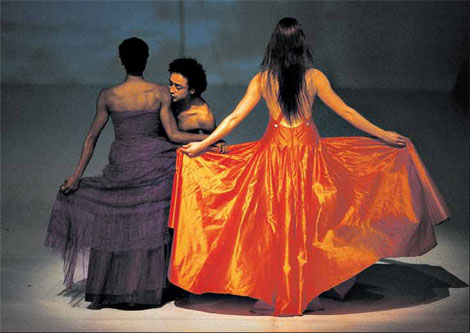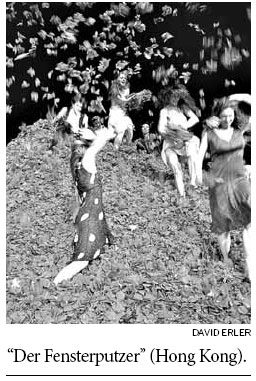
London
During this summer's Olympics, not all the spectacle will be in a stadium. Many revelations will be in theaters, most notably during an unprecedented season of the German choreographer Pina Bausch's "World Cities 2012": 10 works based on residencies all over the globe, performed by her company, Tanztheater Wuppertal.
It's a cultural decathlon of sorts. Bausch's works are neither minimal nor easy to stage. They are exhausting for the performers and the technicians, often more than three hours long, and usually feature sets of challenging complexity and size. The cost of bringing 10 pieces and the 73-strong Wuppertal company to London is £1.8 million ($2.8 million), an amount almost unheard-of for a dance season anywhere.
Three years after Bausch's sudden death at 68 in 2009, "World Cities 2012" opened on June 6 as a centerpiece of the London 2012 Festival.

"World Cities" joins a World Shakespeare Festival; a Gustavo Dudamel Sistema project (a program that teaches music to poor children in Venezuela); and the premiere of the Stockhausen opera "Mittwoch aus Licht," which will live-stream a string quartet from four flying helicopters.
But "World Cities," shown over 20 performances at two theaters, each just two or three days apart, is "simply an unprecedented cultural event," said Joseph V. Melillo, the executive director of the Brooklyn Academy of Music.
Over 36 years, Bausch created an entirely new form of dance that she called tanztheater, or dance theater. Constructed from often surreal vignettes, in which the performers appear as the vehicles of strange rituals and obsessions, the dances transform bodies into repositories of deep irrational fears and hopes, memories and instincts. The work developed an almost cultlike following.
Anything in theater "that has allowed the world of formal movement to be present with the improvised needs of the spoken text comes from her searing breakthrough," said the actress Fiona Shaw, who will be seen in the festival production of "Peace Camp."
Bausch's death, just days after she received a cancer diagnosis, could have derailed the plan.
"Pina did think it was a bit bonkers, that it was a crazy idea, a kind of dream," said Michael Morris, director of the production company Cultural Industry.
The residencies began in 1986, at the Teatro Argentina in Rome, setting a pattern whereby Bausch and her dancers would spend several weeks in each country, collecting impressions and then sharing their feelings, reactions and questions in rehearsals.
Julie Anne Stanzak has been a Tanztheater Wuppertal member since 1985. "What was interesting was to discover, despite the specifics of each culture, how much we all share the same wishes for wellness, creativity, goodness, traditions," she said.
"Viktor," the work from Rome that opened the run, is set in and around an enormous grave. In the Los Angeles-inspired "Nur Du (Only You)" the stage is filled with enormous sequoia trees. "Der Fensterputzer (The Window Washer)," (June 18-19) created after a Hong Kong residency, is dominated by a six-meter-high mound of red silk flowers. "Nefes" (Istanbul, June 24-25) has water rising through the floor to create a shallow lake. "Ten Chi" (Saitama, Japan, June 15-16) is dominated by an enormous whale tail.

Fifty-three trucks will carry sets (including a suspension bridge and a 4.5-metric-ton rock formation) and costumes the 515 kilometers from Wuppertal. "Everyone will be running around like mad," said Peter Pabst, Bausch's longtime stage designer.
Supernumeraries, dogs, mice, chickens, sheep and doves must be hired. Loads of soil and sand must be supplied. Time must be made for rehearsals, lighting checks, and smoothing out artistic problems.
"Something on this scale could only happen because of the Olympics," said Alistair Spalding, artistic director of Sadler's Wells.
Ruth Mackenzie, the festival director, called the series a fitting way "to celebrate the fact that this is a welcoming of the world."
The 10 pieces, which include the Kolkata-inspired "Bamboo Blues" and Bausch's final one, from time spent in Santiago, Chile ("... como el musguito en la piedra, ay si, si, si"), span her last 23 years. They show how her work changed from darker creations to more joyous, dance-filled pieces.
As Ms. Shaw put it: "It may be a way of allowing her to wave to us and to acknowledge that even as she was the future she is now the past. We may also wave back that she is an Olympian, and we carry on, on her shoulders."
The New York Times
|
|
|
|
|
|
|
|
